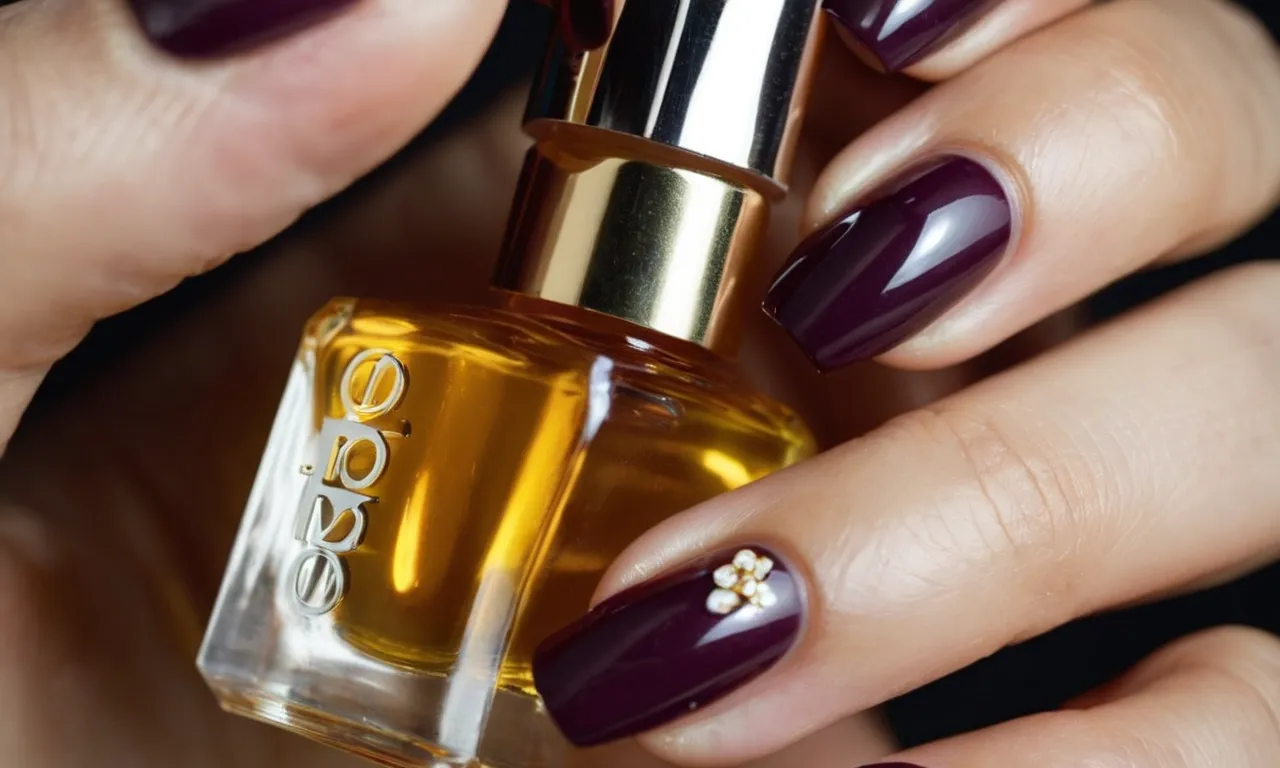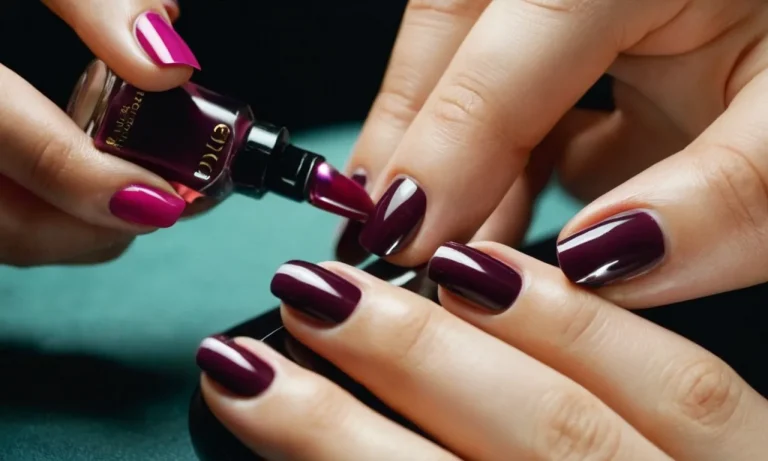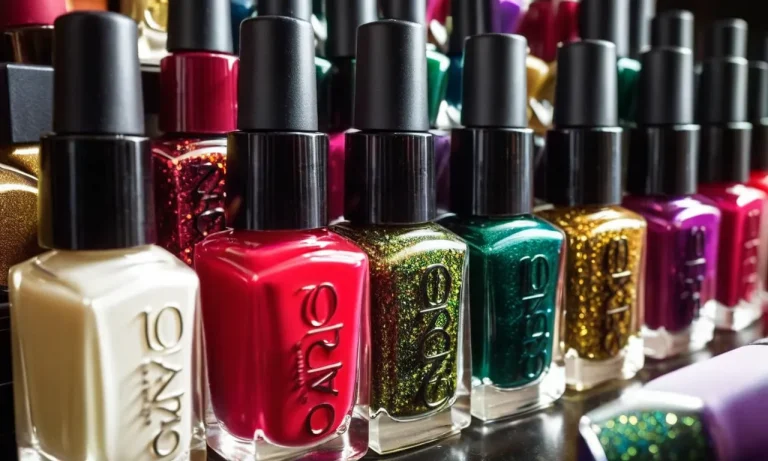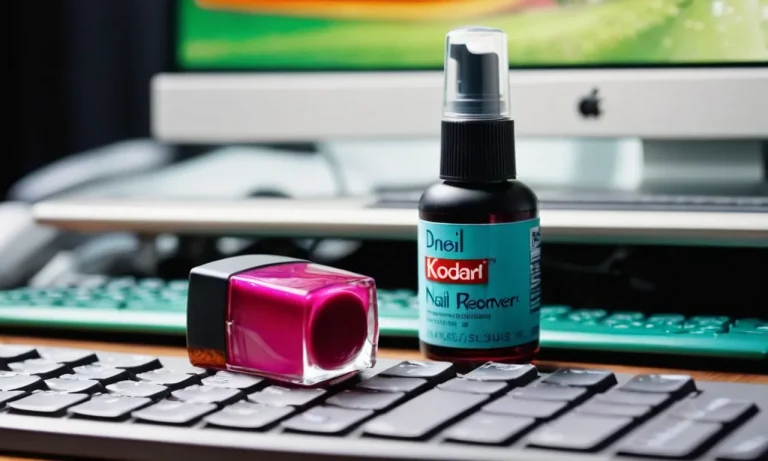How To Maintain Acrylic Nails: A Comprehensive Guide
Having beautiful, long-lasting acrylic nails requires some maintenance and TLC. Without proper care, your nails can start lifting, cracking, or dulling rather quickly. If you’re short on time, here’s the key to keeping your acrylics in great shape: moisturize the nails daily, avoid using your nails as tools, file them properly, and get fill-ins every 2-3 weeks.
In this comprehensive guide, we will cover everything you need to know about caring for your acrylic nails over their life cycle so they continue looking fabulous.
Prepping Nails Before Application
Cuticles and Shaping
Proper cuticle care is crucial for long-lasting acrylic nails. Start by gently pushing back cuticles with an orangewood stick after soaking fingers in warm water. Never cut cuticles as this can lead to infection. Use cuticle nippers to carefully remove any excess dead skin.
Then use a nail file to shape nails into a uniform shape and length. File in one direction starting from the outside edges towards the center. This helps the acrylic adhere better. Smooth any rough edges for a clean slate.
Dehydration and pH Balancing
Nails need to be completely clean and dry before acrylic application. Cleanse nails with soap and water, then use nail prep solution or alcohol to remove any oil and moisture. This helps the acrylic bond properly.
You can also gently buff the natural nails with a fine-grit file or buffer for better adhesion. Then apply nail primer to balance the pH and further dry out nail plates. Allow primer to dry completely before acrylic application.
Properly prepping and dehydrating nails is the key to long-lasting, chip-free acrylics.
Priming the Nail Plate
After shaping and cleansing nails, apply a bonding agent or nail primer. Primers create a tacky layer that enables acrylic powder to adhere properly. Using a primer is especially important for smooth, oily nail types that acrylic has difficulty bonding to.
Primers contain methacrylic acid which roughens the nail surface for better grip. They also remove any remaining moisture and oils while balancing the pH between artificial and natural nails. Let primer dry for 60 seconds until nails look matte and feel tacky.
This ensures maximum acrylic adhesion for 2-3 week wear. Popular professional primer brands like Young Nails Protein Bond and CND Stickey Resin Base Coat prep nails for long-lasting acrylic manicures.
Caring for Nails Immediately After
Avoid Chemical Exposure
After getting acrylic nails applied or filled, it’s crucial to avoid exposing them to chemicals for at least 24 hours. Chemicals like soap, cleaning products, nail polish remover, and even water can interfere with the curing process, causing the acrylic to become brittle or lift from the natural nail.
Make sure to wear gloves when doing household chores and wait a full day before washing your hands excessively or scrubbing them. It’s also best not to immerse the nails in water during this time. Take care when reaching into sinks or tubs.
After 24 hours, gentle hand washing with mild soap and water is fine.
Moisturize Frequently
Acrylic nails can dry out the natural nails and skin surrounding them. To prevent cracking, peeling or other damage, it’s essential to keep both the cuticles and nails well-moisturized.
Apply cuticle oil 2-3 times per day, massaging it into the cuticles and underside of the nails. Look for formulas containing jojoba oil, vitamin E, and aloe vera for extra hydration. You can also rub in hand cream several times a day, focusing on the nails, tips and surrounding skin.
Filing and Shaping
While it’s best not to soak acrylic nails or expose them to water right after application, light filing and shaping is okay. Use a fine-grit emery board to gently shape free edges and smooth any bumps on the surface.
Don’t over-file as this can thin and weaken the nails. Also be cautious of catching or tearing the acrylic. Filing helps define the shape and gets rid of any lifting or roughness. This helps the acrylic adhere properly while curing.
Maintenance Between Fill-Ins
Daily Moisturizing
Moisturizing acrylic nails daily is crucial for keeping them looking fresh and preventing cracking or peeling. Use an oil-based nail and cuticle cream or lotion specifically formulated for acrylic nails. Gently massage it into the nail beds and cuticles once or twice per day.
Jojoba oil, vitamin E oil, and coconut oil also work well. The moisturizer helps retain moisture, which is essential since acrylic nails can dry out the natural nails underneath. Be sure to rub it into the sides and tips of the nails too, not just the top.
Proper daily moisturizing helps acrylic nails last longer between fill-in appointments.
Proper Filing Techniques
It’s important to properly file acrylic nails between salon visits to keep their shape looking neat. Use a 100/180 grit nail file and gently file in one direction starting from the outside corner down towards the center of the nail bed.
Never saw back and forth as that can weaken the acrylic and cause cracks or lifting. Use light, even strokes and avoid filing too aggressively near the cuticles and sides. After filing, buff the nails in a circular motion with a buffing block to smooth out any ridges.
Proper filing removes just enough length to maintain the shape and prevent breakage between appointments. It’s best to file nails every 2-3 days.
Protecting Your Nails
There are a few key ways to protect acrylic nails between appointments so they stay strong and intact:
- Wear gloves – When doing chores like washing dishes, cleaning, or gardening, wear rubber gloves to protect the nails from chemicals and avoid chipping.
- Avoid picking and peeling – Resist the urge to pick at the acrylic nails or peel them off, as that can damage the natural nail underneath.
- Use a strengthening base coat – A base coat formulated for acrylics helps reinforce them.
- Avoid over-filing – Over-filing weakens the nail structure so only file as needed.
- Watch hand placement – Be mindful of accidentally hitting or snagging nails on hard surfaces.
Taking preventative measures goes a long way in maintaining strong, beautiful-looking acrylic nails in between fill appointments!
Knowing When to Get Fill-Ins
Getting regular fill-ins is crucial for maintaining beautiful, long-lasting acrylic nails. But when exactly should you schedule your next appointment?
Every 2-3 Weeks
The general rule of thumb is to get fill-ins done every 2-3 weeks. As your natural nails grow out, a gap forms between the acrylic nail tip and cuticle area. Getting fill-ins helps fill this gap to prevent lifting or cracking.
Shooting for 2 week fill-ins helps keep your nails looking fresh and flawless.
Monitor Nail Growth
The timing can vary a bit depending on how fast your natural nails grow. If you notice your nails growing rapidly with a larger than normal gap, you may need to get fill-ins a bit sooner. On the other hand, slower growing nails may allow an extra week or two between appointments.
Schedule Around Events
Also factor special events into your timeline. If you have a wedding, vacation, or big party coming up, make sure to get a fill-in or fresh set close to the event date. Well-maintained acrylics can take your look to the next level for photos and fun occasions. 😊👏
Ask Your Nail Tech
Chat with your nail technician about the right timing for you. An experienced professional can assess your nail growth rate and condition in order to recommend the optimal schedule. With their skilled eye and expertise, they can help you maintain strong, beautiful nails for as long as you like. 💅✨
Removing Acrylics Properly
When it comes time to remove your acrylic nails, it’s important to do it properly to avoid damage to the natural nails underneath. Here are some tips for safely removing acrylics:
Soak Off the Acrylics
The best method is to soak off acrylic nails instead of roughly pulling or picking them off. Fill a bowl with pure acetone nail polish remover and submerge your nails for 10-15 minutes. The acetone will break down the nail glue and acrylic, allowing you to gently slide off the enhancements.
Never forcefully pull off acrylics as this can rip off layers of your natural nails.
Use Aluminum Foil
You can quicken the soaking process by wrapping each finger with a small piece of aluminum foil after submerging in acetone. The foil helps trap the acetone against the nail plate to dissolve the enhancement faster. Just be sure not to wrap too tightly.
Soften Cuticles and Skin
The acetone can dry out the skin and cuticles so prep them first. Apply cuticle oil around each nail and gently push back overgrown skin with an orangewood stick. Then apply thick lotion or petroleum jelly around the nails before soaking. This protects the skin from irritation.
Gently File the Nails
After soaking for 10-20 minutes the enhancements should slide off with a slight wiggle. Gently slide off as much length as possible. Then use a fine grit nail file to thin out any remaining product on the natural nails if needed. Do not aggressively file at the nail plate as this causes damage.
Smooth and Hydrate Nails
Once acrylics are removed, nails will likely feel thin and weak initially. Finish by gently buffing nails to smooth them out. Apply a deeply conditioning nail oil or cream and massage into the nail plate and skin. Regular moisturizing after removal helps strengthen nails.
Avoid new acrylic or gel polish applications for at least 2 weeks to allow recovery.
Conclusion
With some basic aftercare and maintenance every few weeks, your acrylic manicure can last 4-6 weeks looking fab. Avoid moisture getting trapped under nails, file gently in the right direction, and moisturize daily to keep your acrylics in good condition between salon visits.
Get fill-ins regularly and protect your nails from damage while wearing acrylics. Follow these essential acrylic nail care tips, and you’ll have beautiful, durable acrylics for weeks on end.







